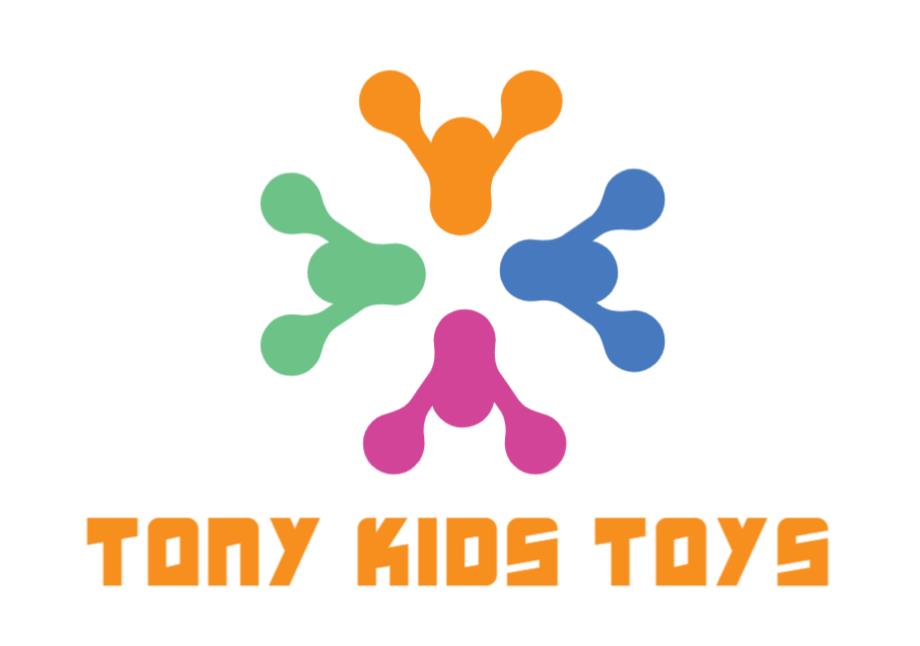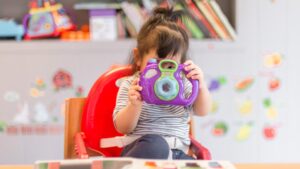As a parent, you want your child to grow in all the important ways, like their language, math, and social skills.
You want to help and encourage their early learning by taking the right steps.
You want your child to have the best chance to grow up to be the best version of themselves.
Being involved in your child’s early learning will help them improve their social and behavioral skills as well as their core skills like language and math. Not only that, but your involvement as a parent helps your child feel loved, connected, and appreciated, which in turn boosts their confidence in learning and in life.
Magda Gerber, who started Resources for Infant Educarers (RIE) and gave us ideas for what we do here at Harmony, says, “An authentic child is one who feels safe, in charge, capable, and connected. When we make a child feel safe, loved, and like “someone is really, really interested in me,” just by the way we look and listen, we change that child’s whole personality and the way he or she sees the world.
As a parent, you have a direct impact on your child’s sense of self-worth, skill, and connection to the world. In fact, your involvement has a direct effect on how well your child does in school. Australia’s Department of Education and Training says, “Parent engagement is linked to improvements across a range of indicators, such as better education outcomes, better behavior, and more social skills.”
So, what can you do as a parent to help your child learn early on?
With everything else you have to do as a parent, it can be hard to figure out how to teach your child at home or where to find the best ways to teach young children.
We’ve put together 5 easy and effective ways to help your child learn early on.
After reading this post, you’ll know tried-and-true ways to help your young child learn, as well as easy ways to put these methods into action. It’s important to know the best ways to help your child grow and learn, but it’s even more important to use them in your daily life and with your family.
Feel free to tell grandparents or other family members and caregivers about these ideas so they can help your child learn, too. The more involved you are in your child’s learning, the better the results will be for your child.
#1 Integrate learning into your daily life.
What Happens:
You can create a strong learning environment without adding more things to your already full schedule by putting educational elements into everyday activities.
Math, language, and social skills can all be taught through everyday tasks and activities, like counting as you walk up the stairs or humming while you rock your baby to sleep.
When you add talking or counting to an activity, it becomes an opportunity to learn and helps your child get ready for reading and math.
How Does It Work:
Your child will learn more and feel more connected to the world if you mix talking and learning into everyday activities. A child can learn a lot in the first few years of life, especially when it comes to speech and language development.
Giving your child lots of talk, music, sounds, numbers, and stories will help them learn and grow as much as possible in their early years.
Easy ways to put it into practice:
Talk about what you are doing. Talk about what you are doing when you are feeding, bathing, or going somewhere with your child. Get them interested and give them a chance to take part.
You can help your child learn rhythm and speech by singing to them or rocking them to music. You can sing simple songs, play music, clap, or repeat nursery rhymes.
Identify things: Show your child the world by pointing out letters, animals, shapes, numbers, and toys, among other things.
Tell your child a story when you’re playing with toys or on the way to an appointment. To make it more fun, use different voices or animal sounds.
Count, measure, and sort: Whether you’re playing with blocks or making breakfast, be sure to count out loud and get your child involved in measuring and sorting when they’re old enough.
As your child gets older, keep teaching them math, reading, and language skills (i.e. discuss the math involved with the weather, sports, money, or cooking recipes).
#2 Read How It Works to your child and with him or her.
How It Works:
You should try to read to and with your child 3–6 times a week at least. Spend time together that is focused and good. Try not to rush through it or make your child feel like reading together is not important.
You can also use books with big pictures that are full of color. Talk out loud as you describe the pictures or make up stories for your child.
How Does It Work:
One of the best ways to help your child learn a language is to read to and with them. Even if they only read for a few minutes a day, it will help them grow. Reading is exciting, fun, and comforting for kids of all ages.
A 2012 study from the University of Melbourne said, “Parents who read to their children improve their reading and other cognitive skills at least until they are 10 or 11 years old.” This is an early help that seems to help them for the rest of their lives.”
Easy ways to put it into practice:
Set aside a specific amount of time to read: Set up a time of day that works for you and your child to read together. Use picture books with lots of bright colors and get your child’s attention by pointing and describing.
Use different stories: You could read stories from a book, make up your own stories based on pictures, add funny voices, or use puppets. Most importantly, have fun! Watch to see which method your child likes best.
Add some other things: Your child can learn more in other areas, like math, if you read them stories with numbers in them (i.e. One Fish Two Fish, Three Blind Mice).
Let your child choose: When your child is old enough, ask them what books they’d like to read.
#3 Build on your child's interests.
What Happens:
Pay close attention to what your child is interested in, and ask your child care center if they’ve noticed any activities that your child has really enjoyed. This will show you what your child is naturally interested in.
With this information, you can help your child learn by giving them chances to interact with things that interest them. Simple activities that let them do what they like are great ways to help them learn how to talk, count, and do science.
How Does It Work:
Giving your child the chance to do what they like will make them more interested in and excited about learning. In the end, by supporting who they are, you are helping them grow. With this method, you are making your child’s learning fun and more tailored to him or her.
Easy ways to put it into practice:
Depending on what your child likes, you might think about…
- Bringing your child
- somewhere new (i.e. the zoo, the park)
- Reading about the subject in books
- Putting on similar music
- Putting on clothes
- Buying a toy, instrument, or stuffed animal that goes with it
- Using blocks to build
- Getting down to music
- More time spent outside
- Have fun and learn a lot at the same time.
#4 Have fun and learn a lot at the same time.
What Happens:
Set aside time to play with and talk to your child in a fun and unique way. Play, move around, and play music when you can.
How Does It Work:
Making early learning fun, relaxing, and enjoyable for you and your child is a key part of making it better. One of the best ways for kids to learn is by playing with their parents.
The Ministry of Education in New Zealand says, “You are your child’s first and most important teacher, and through play and early learning, you help your child’s brain grow.”
Your child loves spending time with you, and if you make that time personal and fun, it will be more meaningful and good for their development.
Easy ways to put it into practice:
- Picture books can be read or shared.
- Paint or draw
- Use to make Play-doh
- Spend time in nature. Dance and play music.
- Together, go to new places
- Play games that involve letters or numbers.
- Dress up game
- Together, pick out toys
When your child is old enough, ask what they would like to do with you for fun. This makes them feel important and gives them control.
#5 Give kids time to play alone and explore on their own.
What Happens:
Give your child time to play and learn on their own. Don’t teach your child directly. Instead, let them learn on their own, in their natural state. This time can be spent with toys, games, or nature inside or outside.
How Does It Work:
By letting your child play and learn on their own, you show that you care about them and give them the chance to grow.
A child is born with the ability to learn and explore, and it is good for them to feel like they can do things on their own and that you trust them. This also gives you time to watch your child and learn more about him or her.
Easy ways to put it into practice:
Make a place to play Let them play with their toys on their own. Buy them an outdoor water table to play with.
Put toys on a blanket and put it outside.
Set up a safe area on your lawn or in a park for your child to explore on their own.
Use what you know about your child to make sure they enjoy their play time.
With these ideas in mind, you can help your child learn in the early years. Try one of the things on the list this week. As time goes on, add more ways to learn and change your approach to fit your child’s needs.
No matter what you decide to do to help your young child learn, know that being involved is the best thing you can do.
Our well-trained and experienced staff at the child care center are always happy to give you more ideas for learning at home and help with your child’s early development. Set up a tour of our child care centers today to learn more about them.


